If you walk, bicycle or drive along Millwood Road along the edge of the Don Valley, a fringe of greenery hides the moonscape below. There are huge clearcuts where heavy machinery has logged over sections of Crothers Woods, a mecca for mountain bikers, walkers and birders. You can easily miss the extensive clearcuts below that make the Don Valley look like logged over sections of British Columbia.
So far Metrolinx says it has cut down 2,712 trees, including old-growth oak and maple, in three sections of the Don Valley: Crothers Woods; Walmsley Brook (on the northern edge of Thorncliffe Park); and Ernest Thompson Seton Park on the West Branch of the Don River south of the Ontario Science Centre. Of those, they say 685 trees were invasive or diseased. That means a loss of 2,102 healthy native trees. Metrolinx does not say how many of those were mature trees, or what species. They’ve promised to plant an average of three native seedlings for every tree cut, depending on its size. But how many of those seedlings will survive? And it will take 50 years for the planted saplings that do survive to develop into mature trees.
“We plan to plant more than 22,000 trees and 27,000 shrubs to compensate for the vegetation removed for Ontario Line construction in the Don Valley,” says Metrolinx. (Despite repeated requests, I could not get Metrolinx to reconcile their numbers. I was forced to conclude they must be using some form of New Math, because if they replace 3,000 trees that were clearcut with three times the number of saplings, that amounts to only 9,000 new trees planted.)
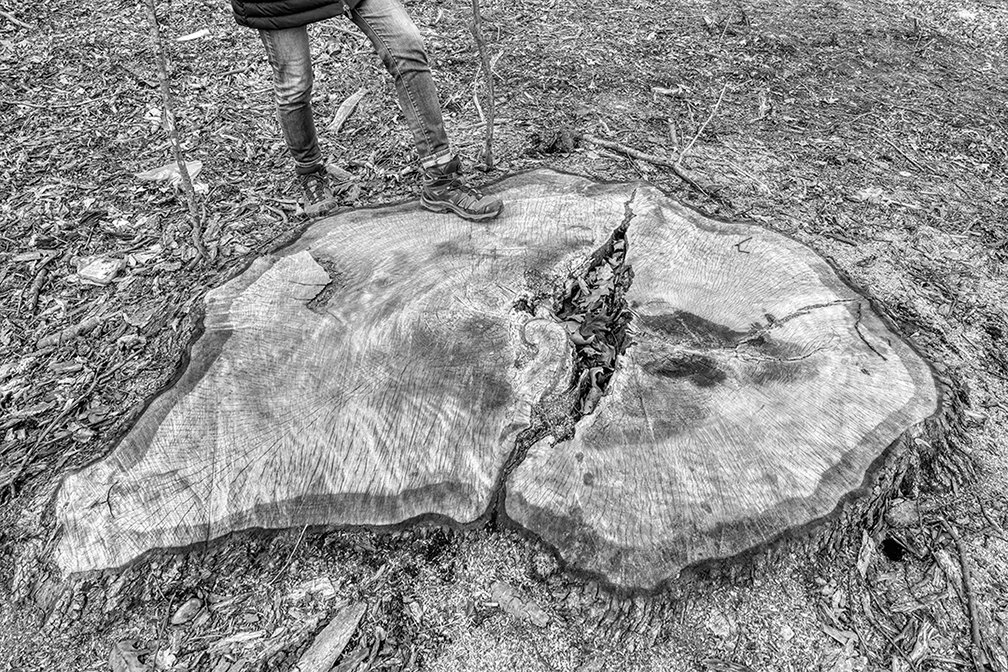
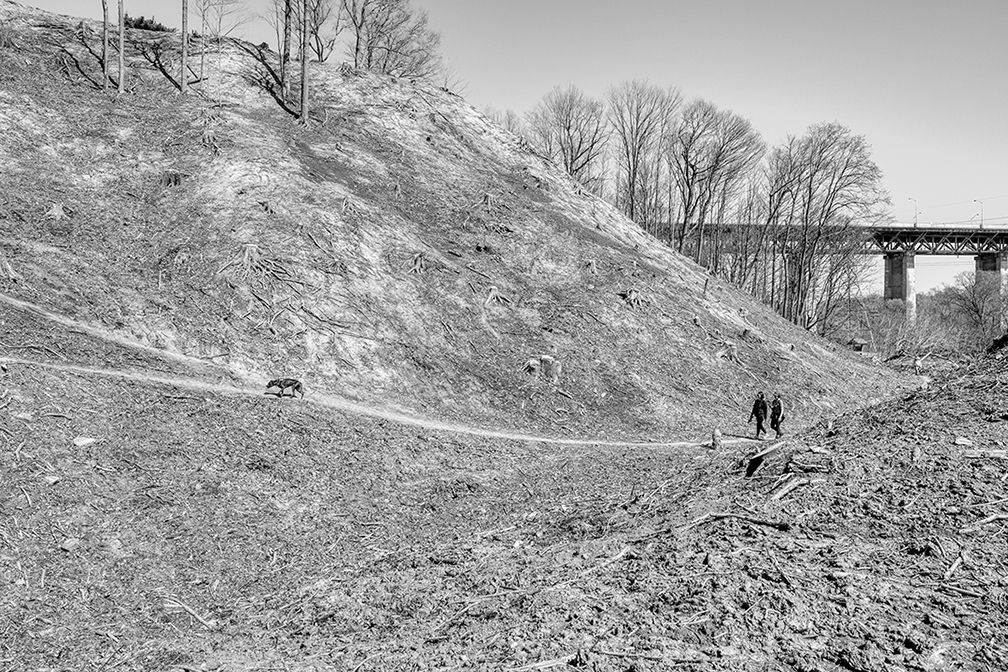
During construction there is a risk of extensive erosion and debris washing into the Don River, according to Metrolinx’s environmental impact assessment. Every Fall salmon swim furiously up the Don River to spawn. Erosion will affect the salmon spawning for years.
As photographer Steven Evans and I walked along the trail below the bare hillside at Crothers Woods, a red-tailed hawk circled overhead with a branch in its beak, looking for a nesting site. I hoped it would choose a tree that wasn’t going to be chain-sawed. We saw no evidence of any silt fencing or matting to prevent soil erosion. It was the same when we hiked along the West Branch of the Don River near the Ontario Science Centre. The clearcutting was right down to the riverbank. A buffer zone of shrubs and trees should have been left to stabilize the shoreline and prevent eroded soil from silting up the river. There was no silt-fencing or matting to prevent erosion there either.
In response to my concerns, Metrolinx provided this statement, “For construction in the Don Valley, silt socks (long tubes) were identified as the most appropriate erosion and sediment control measures. These measures were installed prior to construction and will continue to remain in place until the site has been stabilized post-construction. Regular inspections are completed by a certified inspector to ensure installed erosion measures are effective and identify any repairs required. Contractors are required to submit management plans in advance of construction which outline potential mitigation measures, including exclusion measures to avoid wildlife within the construction site, daily inspection requirements and procedures should wildlife be encountered (utilizing wildlife specialists to safely handle and care for animals). Metrolinx and its contractors will continue to implement environmental mitigations for all future contracts in the Don Valley to protect the natural environment.”
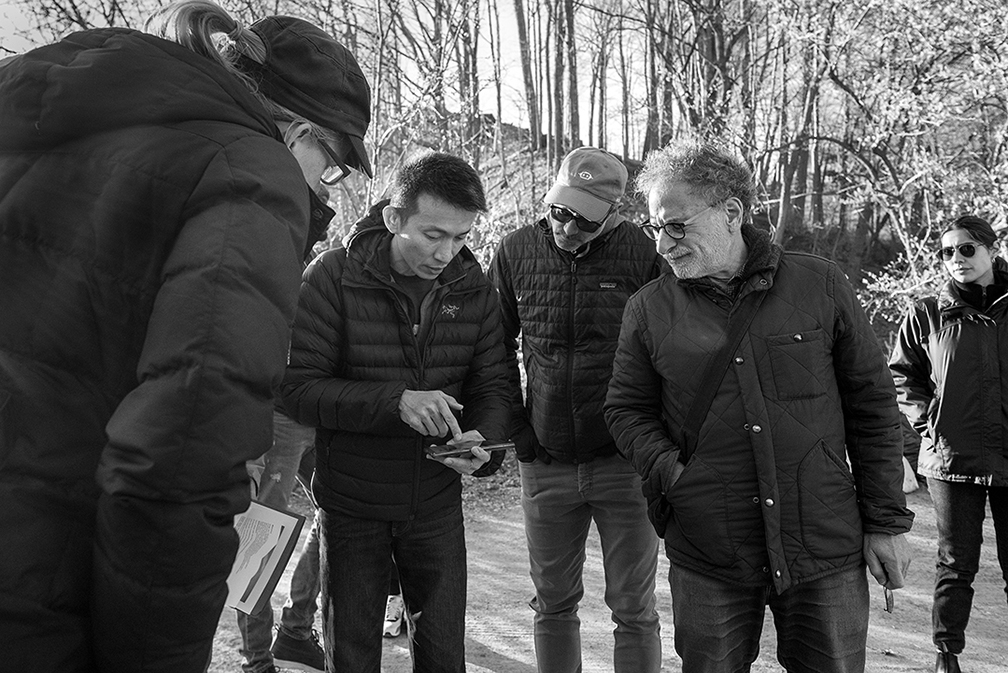
Lawrence Warriner, president of Don’t Mess with the Don, a non-profit group whose mission is to protect and restore Toronto’s ravines, often runs along the trail beside the West Branch of the Don. “Before the clearcutting, I was running through there at night, and saw a mink and a coyote. I’ve seen beaver there multiple times. Their habitat is fragile because of all the invasive species in the valley. I’m not concerned about the deer because they have the ability to move and there’s a lot of them, but a lot of the animals are not able to move so easily. Like the mink. It was right in the middle of that clearcut in Ernest Thompson Seton Park. It was in a log looking out at me. Now its home is gone. The double impact is, not only have they severed wildlife corridors, they’ve killed thousands of animals because they can’t get out of the way of the construction.”
At an Ontario Line community consultation, we were told Metrolinx will be fencing off sections of trails in the Don Valley for three to five years. I proposed creating wildlife corridors to allow coyotes, fox and deer to continue to move up and down the Don Valley, if only at night. I mentioned the tunnels under highways in Banff National Park. The Metrolinx staff were sceptical.
The destruction isn’t only of ravine lands: Metrolinx says it has to demolish a mosque and the only halal butcher store in Thorncliffe Park to make way for its maintenance and train yards for the Ontario Line. When Doug Ford unilaterally announced the route of the Ontario Line in 2019, he said it was going to connect two iconic attractions: the Ontario Science Centre in the north with Ontario Place in the south on Lake Ontario. Now Ford has announced plans to demolish the Ontario Science Centre, so there is no longer any rationale for calling the new subway “The Ontario Line.” When Ford announced the launch of the Ontario Line, the cost was touted to be $10.9 billion. Now the estimated cost has ballooned to $19 billion.
Sabina Ali of the Thorncliffe Park Women’s Committee said the mosque has found a larger lot and is now able to expand, while the halal butcher has relocated to a larger store. While many Thorncliffe residents look forward to a faster commute downtown on the Ontario Line, there is a lot of concern about noise from the 175,000 sq.-metre train maintenance and storage yards to be located along the northern edge of the community. And residents are concerned about the loss of jobs and educational opportunities for students if the Ontario Science Centre is closed. They are also worried that proposed dense housing around the Thorncliffe Park Ontario Line Station will dramatically change the community of 30,000, known as “Arrival City” for its large population of newcomers.
Everything about the Ontario Line project is complicated. Philip Wu, an engineer with the Metrolinx project delivery team, explained that just in the Crothers Woods section, a hydro transmission line has to be relocated and the bridge carrying the twin rail lines has to cross the Don Valley Parkway and GO Train tracks. But GO service can’t be disrupted, so bridge construction near the rail line and parkway will have to be done overnight and on weekends.
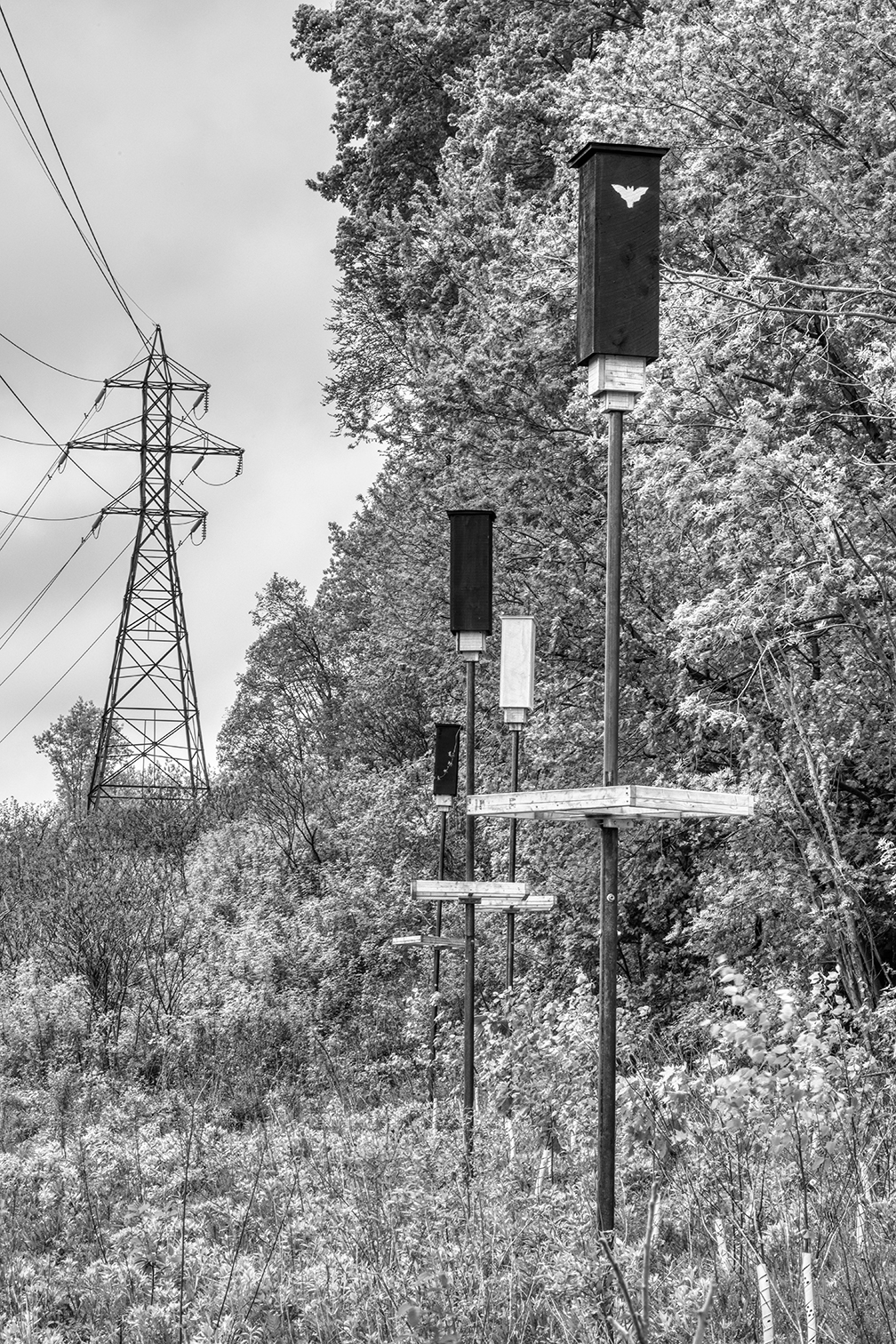
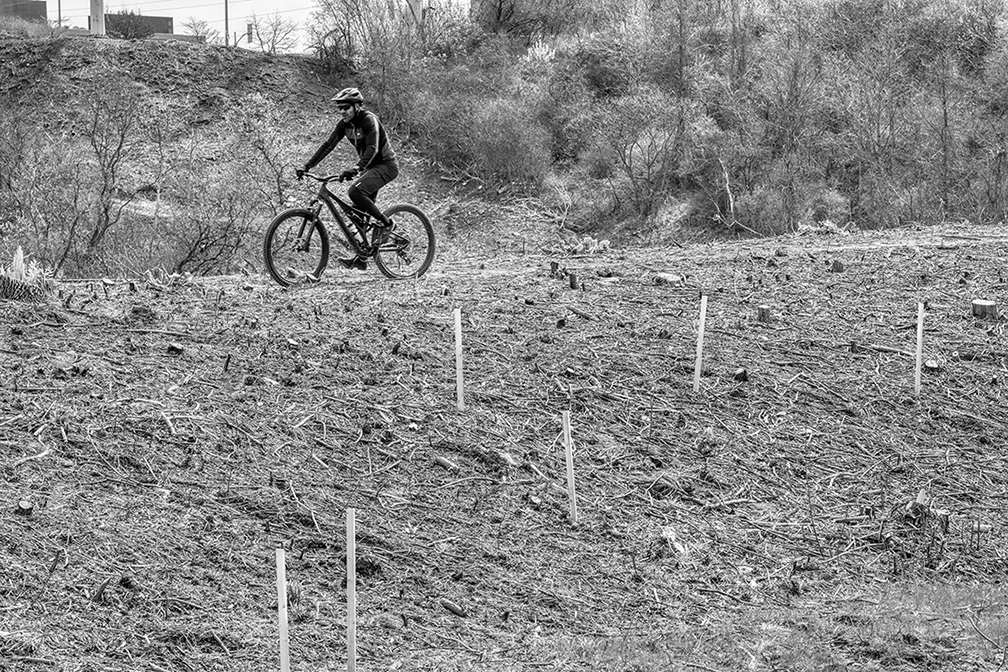
Eventually when the Ontario Line is operational in 2031 (or who knows when, given Metrolinx’s track record with the Eglinton Crosstown LRT), Metrolinx says the 15.6-km subway will take 28,000 cars off Toronto’s roads, and reduce greenhouse gas emissions by 14,000 tonnes per year.
In the meantime, Don’t Mess with the Don says Metrolinx is doing very little so far to mitigate the impact of subway construction on the ecosystem and abundant wildlife in the Don Valley. Volunteers have found that the heavy machinery is spreading invasive species, such as Japanese knotweed, into areas in the valley that had previously been clear of invasives.
The desolate clearcuts in the Don Valley are stark harbingers of what Ontario Place will look like if the Ford government proceeds with its plans to clearcut all 850 mature trees on the West Island of Ontario Place to build a proposed mega-spa.
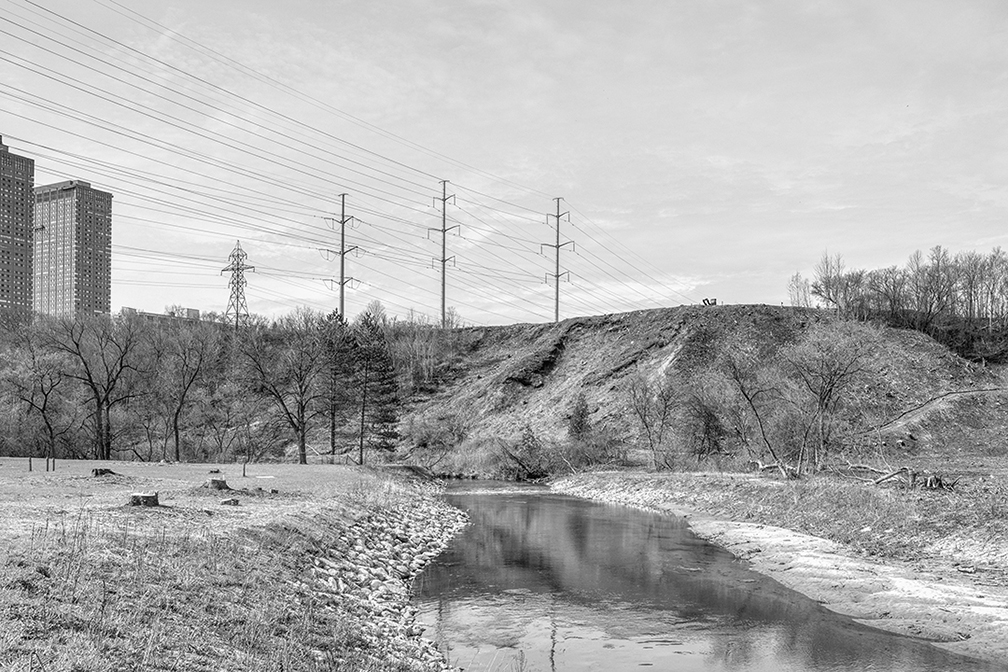
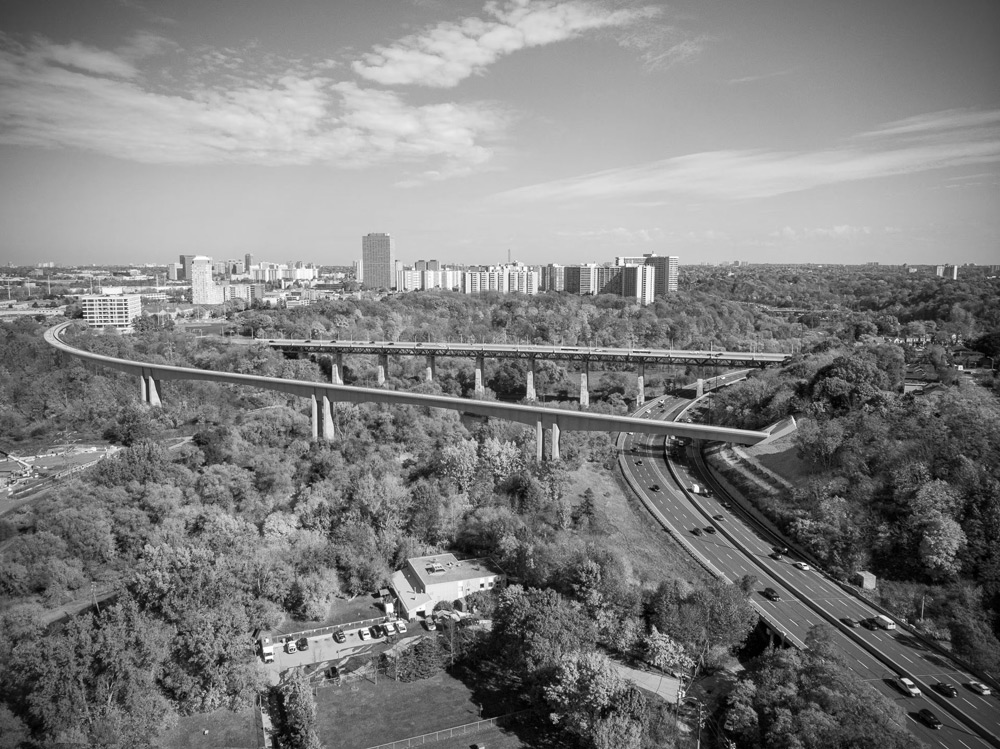
All photographs by Steven Evans unless otherwise noted.
Ian Darragh is a former editor-in-chief of Canadian Geographic magazine. Photographer Steven Evans’ latest book is As It Is: A Precarious Moment in the Life of Ontario Place.

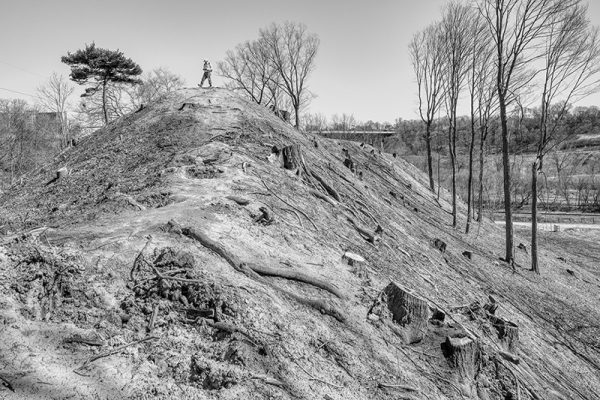


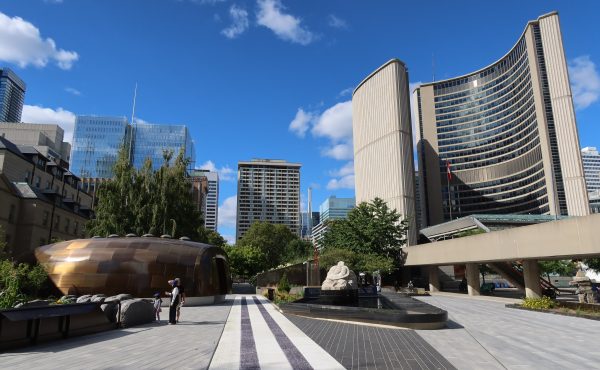
12 comments
Thank you for documenting this. Metrolinx destroyed valuable greenspace in our neighbourhoods and should rightly face criticism for their delight in doing so for their engineering vanity project. Especially when the eastern section of the Ontario Line could have gone through industrial zones areas instead, avoiding the destruction of hundreds of trees and beautiful habitats for rabbits, coyotes, woodchucks and hawks and other birds and insects.
They also had the audacity to claim in their distribution materials that the electric trains and maintenance yard near Thorncliffe Park wouldn’t make as much noise as diesel trains, conveniently omitting the fact that steel wheels on steel rails make the bulk of train noise, especially at low speed.
I have repeatedly witnessed this “progress” and it shocks and saddens me each time. Concerned parties should contact the following Metrolinx rep:
Re the west Don crossing:
FLAVIA SANTIAGO
Manager, Environmental Programs & Assessment
20 Bay Street | Toronto | Ontario | M5J 2N8
C: 437.244.2173
I enjoy biking through the Don Valley and it’s an excellent feature of our city. When I saw the clearcuts it was saddening. How could they do this? Oh right, it’s to build a subway that serves an immigrant neighbourhood that’s not very walkable and has poor transit. It will establish a necessary route to support new housing at Don Mills & Eglinton.
Construction isn’t easy, and losing our trail is difficult. But it’s for public transit. Imagine Toronto without its subway lines or bike lanes, adding thousands of cars on the roads and decreasing quality of life for everyone. The trees will be replanted and regrow.
We, as conscious inhabitants of the city, should always campaign for more public transit and better infrastructure that serves masses of people. It’s indispensible to a city that’s already choking on traffic due to poor connections outside a select few corridors.
Sad to see parts of the valley cleared for construction, but for every tree cut down to build this line, it will save dozens outside the city that would otherwise be cleared for more sprawl. Allowing people to get around the city quickly means more people can and want to live within already developed areas. If we are seriously discussing the health of the Don Valley, a conversation about a removal of the DVP south of Bayview/Bloor would be in order. But something tells me a lot of the ‘environmentalists’ opposing an emissions free subway are quite fond of their SUVs and the highway they drive it down, regardless of how many trees its construction consumed.
Metrolinx shouldn’t be allowed to build a sandbox.
Thank you for bringing this to people’s attention. I hope they see what destruction Metrolink has done and make them accountable and prevent them from causing any more future damages.
I feel really sad and heart stricken reading this. I used to live in Toronto and remember what a wonderful green space the Don Valley is.
People must realize whenever things like this happens there’s no coming back. We need to preserve and protect what we can while we still have it.
This is hardly a “vanity project” to those of who live & transit in the GTA, esp. given that those #s will inevitably rise. I hike the Don (Heath south to Bloor) & had NO idea this was happening. You prefer more Ford government adverts about expanding highways?
I have walked in Crothers Woods for more than 30 years. In that time I have enjoyed a little bit of “wild”. There are walking trails, also used by mountain cyclists; Crothers Woods is clearly not wilderness. But one can occasionally enjoy a solitary walk under towering hardwoods with the sound of birds and the Don River below.
In April there were spring ephemerals – trout lily, hepatica, blood root and even blue cohosh. All these wildflowers are native and require a specific well established forest to thrive. Crothers Woods, unlike the Don trail with its exotic invasive species and “weed” trees, was the only place I knew of close to downtown where you could find these beauties growing naturally – not a garden or horticultural centre but just, in the woods, in a perfectly suited habitat that had taken centuries to evolve.
About twenty years ago I saw what looked, from a distance, like a lynx with its upright “ears”, high in one of the trees. I discovered eventually that it was a Great Horned Owl. It was in that same tree so regularly that I could invite interested friends to join me on my walk through Crothers Woods and we would almost be guaranteed to see it.
Earlier this year, the hill above the Filtration Plant was clear cut. All the trees, all the understory and all the ground vegetation was removed. Yellow tape was installed in an attempt to prevent people from going east through this devastation to the remaining woods.
A couple weeks ago I decided to approach the clear cut from the east, from the woods just to the west of the Overlea bridge. This area has been also clear cut now. It is interesting to note in Metrolinx’s mockup of the Ontario Line that this bridge has many more supports than the Metrolinx proposed aboveground structure. Yet it was constructed without total destruction of the forest below. And the Metrolinx elevated rail in the mockup rises above a mature forest, not a clear cut with a few wimpy whips.
This loss of a well established mixed hardwood forest is one that can not be mitigated in our lifetime. Whips and saplings can be planted but a mature forest with its native flora and fauna takes time – it cannot be hurried.
Metrolinx has shown again and again that it has no regard for the community it affects – communities of citizens, wild life and natural habitats.
It is time for the people and government of the City of Toronto to stand up for our natural
heritage. Nature can’t stand up for itself. It needs people to do that for it.
They’ve destroyed our urban canopy as well. The massive loss of trees at Moss Park, Osgoode hall and the sections in Leslieville will take generations to regenerate.
I love the Don Valley, hope any destruction there can be minimized. But I started noticing that the same people who criticize cutting trees there for transit have no problem driving on the polluting and inefficient DVP: so many lanes, so much asphalt to transport less people than a train. I wish the critics would just say: “lets just get rid of the DVP and make room for transit using our wild area”. just saying no to transit is not cut it.
Thank you for highlighting this. I fully discovered the Don during Covid and it is lifesaver for physical and mental health. I don’t care that much if mature forest is 66% invasive. Still better than wasteland clear cut.
I am biking thru those areas as frequently as I can. I imagine Metrolinx will face plenty of issues with trail closures in areas they don’t work on. This is the most dense and all year heavy used of the network built by people from nothing.
One of the clear cuts in Crother woods is just for power line relocation – they are building power line tower next to Filtration plant. Was that really not possible to be done without clear cut?
Don river trails are being blocked for years on so many places:
– Lower don river trail surprisingly takes 2 years longer than expected – closed at Pottery Road by City
– Pottery road entrance renovation blocked, hopefully opened this year
– Crother woods in your article
– area between Overlea Cliff & archery range mentioned in your article, but also clear cut previously for Don remediation by TRCA
– Major closure for Don remediation by TRCA next to Thorncliffe park Trestle.
Meanwhile, we may have whole alternative valley to enjoy where TRCA completed parts of very expensive infrastructure years ago but remain inaccessible behind Metrolinx lack of cooperation.
https://trca.ca/conservation/infrastructure-projects/east-don-trail-project/
Beyond shocking! This PC government has absolutely no moral center evidenced by the destruction of old-growth forest within a sensitive urban environment. They wiped out over 2000 mature native trees that were hundreds of years old and promise to plant saplings and shrubs to replace them.
Yes, we need public transit. No, it does not have to obliterate a forest.
Someone should make Doug Ford live in a clear-cut valley to see what he thinks of it.